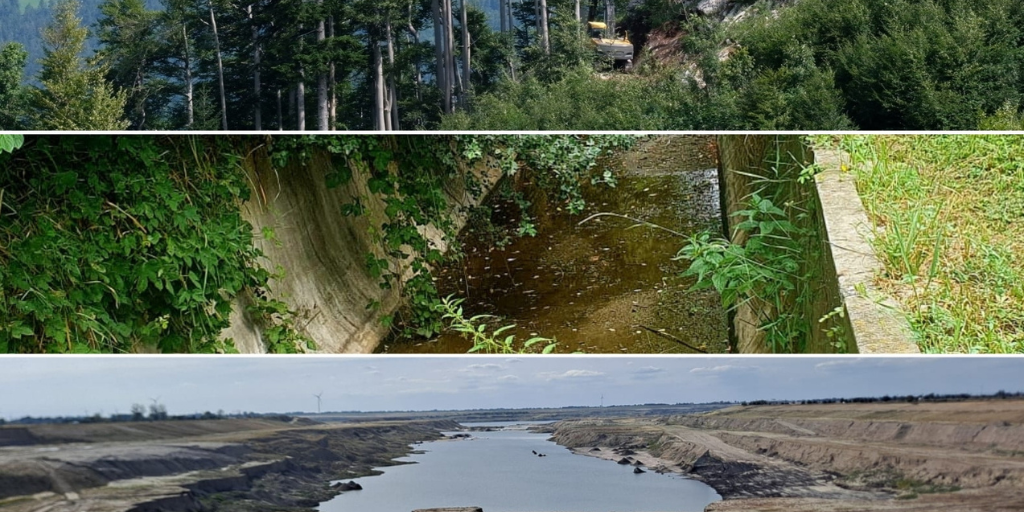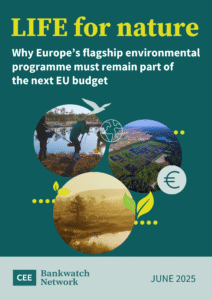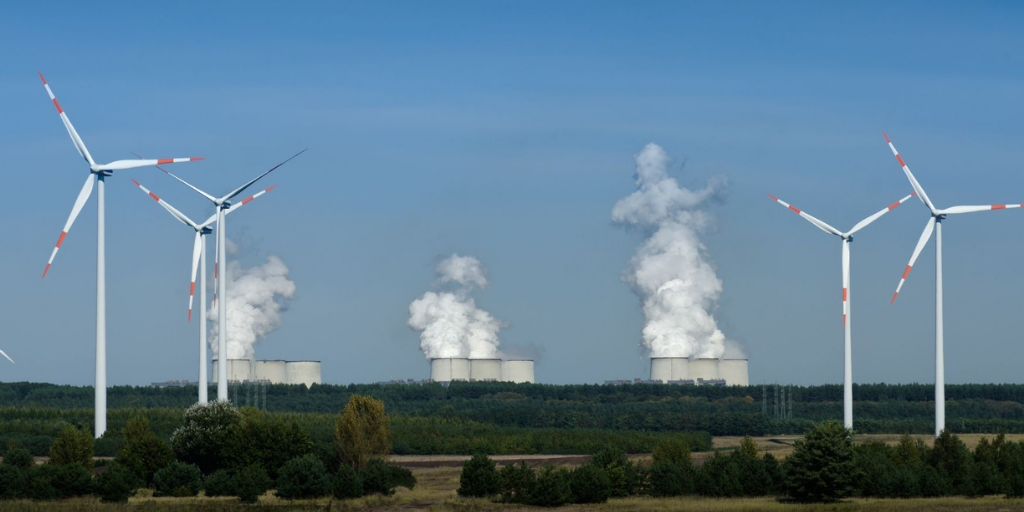EU funds and biodiversity
Nature in Europe and beyond is in crisis. 81 per cent of habitats in the EU are in ‘poor condition’, and without swift action this will only become worse. We need systemic and wide-reaching action and investments to tackle biodiversity loss and help restore nature before it is too late. The EU has pledged at least 20 billion per year from the EU budget to be earmarked for biodiversity by 2027, offering enormous potential to restore and protect nature, providing this is properly invested. We are closely monitoring the proposal for the next EU Budget, to be released in 2025, to improve the use of EU biodiversity financing and to ensure these public funds work for – not against – nature.

Stay informed
We closely follow international public finance and bring critical updates from the ground.
Key facts
In May 2020, the EU released the Biodiversity Strategy for 2030 aimed at both restoring and protecting biodiversity across the EU.
By 2030, the EU has a target to protect 30 per cent of land and sea. This was further supported by the adoption of the Nature Restoration Law in 2024, one of the key elements of the EU Green Deal that sets concrete targets for restoration of different ecosystems across the EU.
Sufficient financial resources are needed to successfully implement this. Yet the EU’s target to allocate 10 per cent of the EU budget annually to biodiversity is predicted not to be achieved.
Investing in nature is key to tackling climate change. EU forests currently absorb the equivalent of 8.9 per cent of the EU’s total greenhouse gas emissions. Improved management could allow this to be doubled.
Key issues
Biodiversity needs increased and stable funding
Significant funding gaps remain a key barrier for successfully tackling biodiversity loss. There is an overall financing gap for biodiversity of around EUR 186.89 billion over the entire period. New financing approaches are needed to align spending with biodiversity priorities and needs, and to finance targeted activities that meet the EU’s various biodiversity objectives.
Lack of cross-sectoral cooperation
A lack of cross-sectoral cooperation is one of the key barriers to improving the provision of EU funds and hindering mainstreaming efforts. More attention must be focused on mobilising stakeholders across different sectors, as well as citizens, businesses, academic institutions, and other social partners, to work together and make a concerted effort to address biodiversity loss. On this point, the EU has a crucial role to play in making biodiversity loss a political priority and effectively communicating the importance of facilitating action at all levels.
Lack of compliance with, and enforcement of, EU environmental legislation
The failure to properly implement and apply the EU’s environmental legislation designed to protect biodiversity must be urgently addressed. The vast amounts of EU funds now available can and should encourage Member States to effectively implement EU environmental legislation. What the EU needs to do now is establish rules to guarantee that funds are only disbursed when the implementation conditions have been met. Conversely, funds should be suspended in cases of infringements.
Background
In central and eastern Europe, around 41 per cent of all public investments come from EU funds, meaning that these funds can significantly determine the region’s future. The investment decisions made today will therefore shape the region for years to come.
However, Bankwatch has documented numerous cases where EU funds and investments have been damaging to nature, rather than maximising their transformative potential to address the biodiversity crisis.
Working with campaigners across ten central and eastern European Member States, we are advocating for the current and new EU budget funds to properly support biodiversity, while preventing investments that are damaging to nature.
Transparent, inclusive and participatory decision making
Allowing the public to actively participate in planning and decision-making processes of EU funds has been shown to deliver better quality projects and higher environmental ambition, as well as creating public ownership and engagement. Therefore, to make the most of EU funds, it is important that all interested people are involved throughout the process, from planning to implementation. In particular, the knowledge and expertise of environmental NGOs is vital for developing programmes that can truly protect and restore biodiversity.
Nature is key to tackling climate change
The biodiversity crisis is equally as important as the climate crisis – the two are interconnected and both must be tackled together. As well as being vital for biodiversity, restoring nature is an important way to adapt to and mitigate climate change; soil, grasslands, peatlands and forests for example are vital carbon sinks and can cheaply and effectively sequestrate CO2 emissions. Only by investing in nature can we tackle climate change. Read our examples of nature restoration and conservation projects across Central and Eastern Europe here.
When nature shows the way. Supporting biodiversity in Europe
Tackling biodiversity loss has long been neglected, and as a result, nature across Europe is now in an alarming state. Nature restoration provides a cost-effective way to address the biodiversity crisis. It also offers enormous potential to tackle climate change, and deliver environmental, social and economic benefits.
We offer a set of positive examples of projects where EU funds were used for enhancing biodiversity.
Harmful project documenting tool
Individuals, groups of citizens and non-governmental organisations across the European Union may often face projects in their surroundings that are or may be harmful to nature. They are therefore key actors in identifying, monitoring and, where necessary, submitting complaints to the authorities to improve environmental conditions or to prevent such projects from going ahead altogether.
This project documenting tool offers a practical, step-by-step approach to gathering information on problematic projects. It guides individuals, informal groups and organisations to quickly evaluate a project’s potential impact.

Unlocking funds for nature: How the next EU budget must deliver for biodiversity
Effective and well targeted financing is crucial for achieving EU biodiversity objectives, but significant funding gaps represent a serious impediment to successfully addressing biodiversity loss.
This joint statement offers three policy proposals to improve EU biodiversity financing. Though focused on the post-2027 Multiannual Financial Framework, it also takes a broader perspective on biodiversity financing and considers the longer term need to re-evaluate current approaches. The proposals are therefore designed to put biodiversity on a path to recovery beyond the next funding period.

EU funds: Protecting or damaging nature? How to avoid harmful projects
EU funds are a major source of financing for nature restoration and conservation projects, especially in central and eastern Europe. However, activities and investments, if not planned and implemented correctly, risk supporting projects that will harm Europe’s rich biodiversity.
The following recommendations are based on the case studies from Croatia, Hungary, Latvia, Poland and Slovenia and highlight some of the many ways EU funds may risk negatively impacting biodiversity.

From theory to practice: A case-based analysis of the EU’s ‘do no significant harm’ principle
In 2021, the European Union introduced the ‘do no significant harm’ principle for EU funds, an environmental safeguard aimed at preventing investments from causing environmental harm.
This report, through a series of case studies, analyses how the ‘do no significant harm’ principle has been applied in various EU Member States, and assesses the extent to which the current application of the principle is delivering on its objective.

Latest news
Solar, wind industry worried about ‘daft’ EU permitting rules
Bankwatch in the media | 18 November, 2022New emergency permitting rules tabled by the European Commission just over a week ago would concern only “new” renewable energy projects …
Read more‘Destructive, undemocratic and possibly illegal’ – green groups slate leaked EU renewables emergency measures
Press release | 8 November, 2022EU plans for an emergency regulation to accelerate renewable energy deployment are highly destructive for biodiversity, undemocratic and possibly illegal, CEE Bankwatch Network and EuroNatur warned today, after a leaked text of the proposal was published by Context Energie.
Read moreBiodiversity on the brink: what’s holding back financing for nature?
Blog entry | 5 October, 2022Simply put, the significant potential of EU funding is not being used for nature, and this must change.
Read moreRelated publications
Put nature at the centre of Europe’s budget 2028–2034
Joint letter | 16 December, 2025 | Download PDFThis joint letter addressed to Members of the European Council ahead of the European Council meeting on 18–19 December, urges to put nature back at the centre of Europe’s EU budget.
Inclusion of the Habitats, Birds and Water Framework Directives in the Energy Community Treaty: An urgent imperative
Briefing | 1 December, 2025 | Download PDFThis briefing explains why the Birds Directive, Habitats Directive and Water Framework Directive need to be included in the Energy Community Treaty.
Cutting off the branch we’re sitting on: Urgent course correction needed on EU biodiversity financing to secure the EU’s natural resilience
Report | 31 October, 2025 | Download PDFHalfway through the implementation period of the EU Biodiversity Strategy for 2030, evidence is mounting that the EU and its Member States are not on track to fulfil their commitments.


